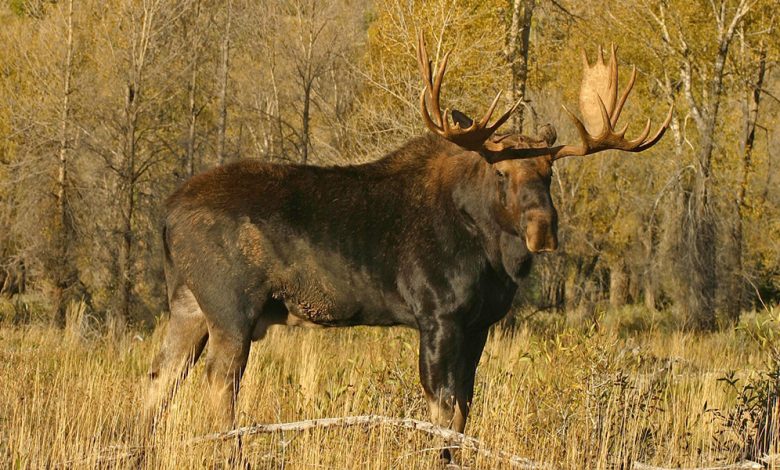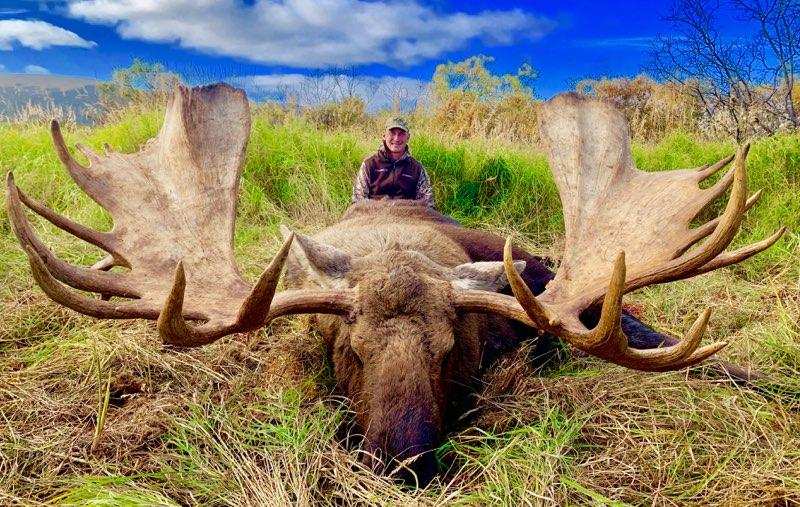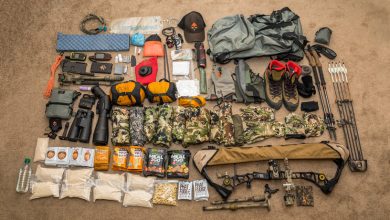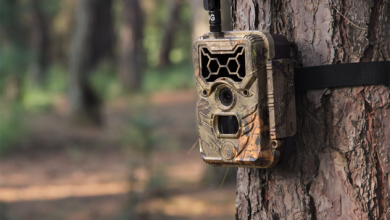The Most Complete Guide On Moose Hunting

Always close to those of the cold extremes, with high environmental relative humidity and surrounded by heather, birches, firs and other conifers. Always suffering the rigors of heavy snowfall and with an unbridled passion for tender aquatic plants. The elk, that excessive deer whose life develops in such a hard and hostile land, looks out of our window of hunting in other worlds.
With its grotesque features and apparently unbalanced proportions, this deer is perhaps one of the deer that has made the least concessions to evolution. Its ancestors may have had different body and horn sizes than those of today. But there is no doubt that the adaptation to its current situation and morphology has been far less significant than those of many of its relatives.
Stagnant in its vast areas of grazing, shelter and procreation, its long legs serve it to eat in swampy areas, while its hump stores fat for adverse times. On those immense surfaces it inhabits, its bulging nose acts as a sounding board for communication with its fellow creatures. Thus, its capacity to capture food, to store it and to procreate are the pillars that, diminishing the aesthetics, make it a very special and almost essential animal inside our pavilion.
Moose Hunting

Distribution
The largest deer to roam the world’s hunting grounds can be found on the northernmost fringe of North America and Eurasia. The taiga that extends through Norway, Sweden, Finland, Russia and China is its European area; in America, it is found in Alaska, Canada and in the northern United States. It lives in forested areas (conifers, willows, poplars) that are covered with snow in the winter. But where there are wetlands, such as lakes, rivers and swamps where it can dive – for several minutes – in summer to reach the roots of lilies and other aquatic plants and at the same time get rid of clouds of mosquitoes.
For this reason, there are two types of moose:
- The European, which inhabits the northern and northern areas of Europe
- The American – also known as the giant moose – which is distributed over the same areas, but from Alaska and Canada. It is larger than the European, although the latter, in certain areas, such as the Kamchatka peninsula in Russia, tends to be the same.
Behavior
Elks are active during the day, with maximum peaks at dawn and dusk. Good swimmers, they move quickly on land, and adults can reach speeds of fifty-six kilometers per hour.
In the north of the American continent, they do not make long migrations but stay more or less in the same area, although some populations may migrate between favorable sites several times a year. On the other hand, it is not uncommon for European elks to travel more than three hundred miles in search of more suitable territories at each time of year.
It is a solitary animal – it needs a lot of lands to feed itself – although sometimes two individuals can be seen feeding along the same area of water or also small groups if there is a shortage of food due to the snow. Females are equally solitary and only go with their young, being very aggressive if they feel any kind of danger for the latter: carrying and kicking is their way of defending them. Elks only gather in larger groups during the mating season. It is understood that they congregate in a certain area as individuals and not in the form of herds.
During the reproductive period, the females attract the males by emitting sounds that can be heard from more than three kilometers away, for which they use their nasal pouch. Rival males compete for the females during this time, an antagonism that can end with one of the contestants fleeing if the other is bigger (without getting into a direct confrontation) or getting into a fight that can become quite violent. The male mates with several females, remaining only a few days with each one.
BIOLOGICAL PARAMETERS
- GESTATION: from 242 to 250 days (about eight months). Usually, females synchronize their births at the end of May and the beginning of June.
- NUMBER OF BIRTHS PER LITTERING: one (with ten to twelve kilos), although twins are not rare.
- PUP MORTALITY 0 TO 12 MONTHS: 50%.
- DESTATE: at six months of age.
- AGE OF INDEPENDENCE: over twelve months, normally when the mother has another calf.
- AGE OF FIRST REPRODUCTION: two years in females and males, but optimal development is not completed until four or five years, which is when females reach their reproductive peak and males have the largest antlers.
- LENGTH: the average is from five to twelve years in the wild (although exceptionally, there have been found specimens of females of twenty-two years and males of fifteen). From the age of eight, they begin to decline due to joint problems (arthritis), dental alterations and suffer more from the aggression of other younger and stronger males.
Hunting methods
Although their eyesight is poor – but they can discover objects in motion quite well. Their large ears rotate one hundred and eighty degrees, which gives them excellent auditory qualities. Likewise, their sense of smell is highly developed to enable them to find food under a thick layer of snow.
Elk hunting methods are different depending on the area: in North America, they are shot using lures and stalking. In Europe, they are beaten and tracked – if the area to be beaten is small, relatively, it is done with moose dogs; if it is larger, they are left loose until they hit the elk – and they are also hunted the American way, that is, stalking.
Elk hunting is -due to the land where it is practiced, the way it is done, the lack of comfort and the normally low temperatures- quite hard. Not indicated for beginners, but for experienced hunters, with a good physical shape and mental resistance, understanding that what you have to be really prepared for is the hostile environment: if you know how to overcome this, the casts are relatively comfortable. Let’s see, then, each form of moose hunting:
TAXONOMY
- CLASS: Mammalia
- ORDER: Artiodactyla
- SUPERFAMILY: Cervoidea
- FAMILY: Cervidae
- SUBFAMILY: Capreolinae
- GENDER: Elk
- SPECIES: Elk (Eurasian) and American Elk (American). The American Elk would be larger in size and with slightly different antlers than the Eurasian variety.
- SUBSPECIES: there are controversies about their scientific classification into subspecies; however, the six possible ones are A. Americana Gigas, A Americana Andersoni, A Americana Americana, A. a. Americana Shirari, A. elk and A. cameloid elk.
With call: taking advantage of the sounds that both females and males emit during the scream, calls are used with two types of call: one to imitate the male (which we can call a call of rivalry) and another that resembles the female (that is, a call of sexual attraction).
Normally, the hunter stands at the edge of a lake or swamp, well hidden among the surrounding vegetation, and starts with the calls which, if properly made and successful, will manage to attract some male. This call is made with a very typical kind of trumpet and, if a good specimen is sufficiently jealous, it will come to the call, running over everything in its path, in order to show the female all its power.
Stalking: in the woodlands or scrubland areas of North America, this method is practiced in the months of September and October, since, afterward, when the snow layer becomes thicker, the animal’s march is much slower and following its tracks is extremely easy. The Governments of Alaska and Canada prohibit this type of hunting in these circumstances.




